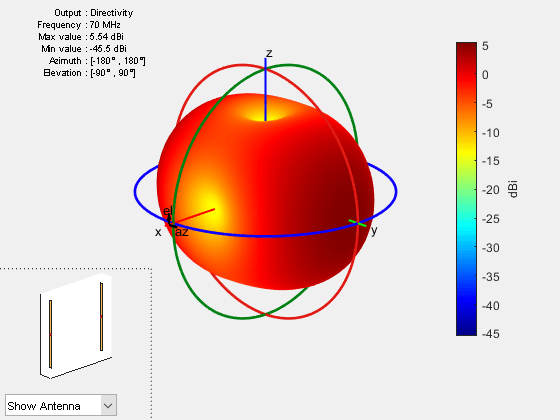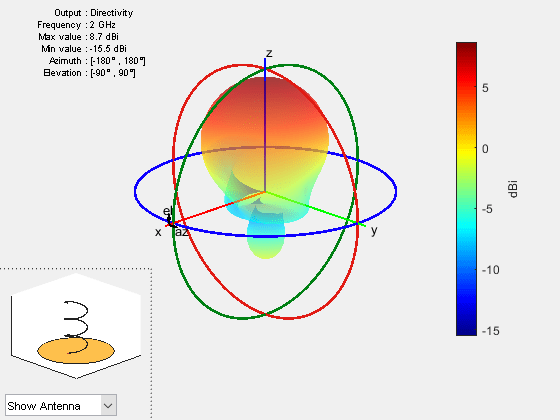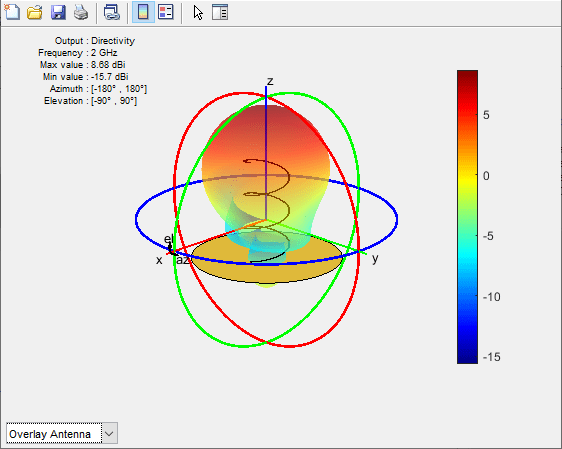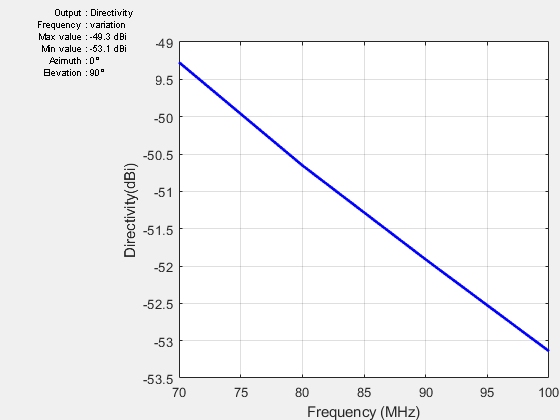pattern
Plot radiation pattern of antenna, array, or embedded element of array
Syntax
Description
pattern(
plots the 3-D radiation pattern of the antenna or array object over a specified frequency.
By default, in Antenna Toolbox™, the far-field radius is set to object,frequency)100λ. For a detailed
explanation, see Field Calculation in Antennas.
[___] = pattern(___,
uses additional options specified by one or more name-value arguments. You can use any of the input and output arguments from
previous syntaxes.Name=Value)
Use the ElementNumber and Termination property
to calculate the embedded pattern of the antenna element in an array connected to a
voltage source. The voltage source model consists of an ideal voltage source of 1 volt in
series with a source impedance. The embedded pattern includes the effect of mutual
coupling due to the other antenna elements in the array.
Examples
Input Arguments
Name-Value Arguments
Output Arguments
References
[1] Makarov, Sergey N. Antenna and EM Modeling in MATLAB. Chapter3, Sec 3.4 3.8. Wiley Inter-Science.
[2] Balanis, C.A. Antenna Theory, Analysis and Design, Chapter 2, sec 2.3-2.6, Wiley.
Version History
Introduced in R2015a







